How to Build a House in Yucatan
Before we moved to Yucatan, we spent two years renovating a 70-year-old Spanish Revival home in central California. While the process was initially quite enjoyable, several unexpected problems resulted in a project that took twice as long to complete than originally planned. It also cost a considerable amount more than we had budgeted. In the end, we swore off another project and bought a fully renovated house in Merida’s Centro Historico for considerably less.
Oddly enough, it didn’t take long before we found ourselves engaged in the renovation of a smaller colonial house to use as an office. Perhaps we’re slow learners, or we just can’t accept defeat. Yet, contrary to our expectations, the project was completed quickly and on budget, despite the arrival of a major hurricane near the end of construction.
If you plan to renovate one of Merida’s lovely colonial homes, or to build a new home in the area, don’t be surprised if your experience is like either or neither of ours. No matter where you are in the world, building a house can be simple or complicated, easy or hard, a dream or a nightmare.
Having said all that, there are some things that you should consider if you are going to build or renovate in Yucatan. Many of our readers have asked our opinions on this subject, so we are offering them in this article. By no means is this meant to cover every possible situation, and we would hope that anyone who has something valuable to share will comment below.
1 - Buy Local
The most important thing we have learned is that if you are building in Yucatan, then choose a local architect and construction firm that has several years of experience in Yucatan. Select those who have a portfolio that matches your tastes and a list of satisfied references. There are many here speak English and their firms have at least one additional person on staff who speaks English as well. Several architectural firms over the years have developed their English-speaking skills in order to communicate better with English-speaking clients. The local architect school, FAUADY, graduates more architects every year and is a well-respected school in Mexico. There are no shortage of competent, honest and creative local architects.
Many foreigners who come to Yucatan learn the basics of renovation and remodeling. Depending on the scope of your project, they may offer a reasonable alternative to using a local firm. But remember that they do not have friends or family in the business, nor in government, and it is through this network of personal resources that the majority of Mexican business gets done.
Local architects and contractors are well connected and know the local markets and best practices. They will be able to advise you on construction and design techniques that work best in a tropical climate using materials that are most common to the area. They know the authorities in the government and the culturally accepted way to make things happen. In the long run, they will probably achieve the results you want at a better price.
2 - Get An Estimate
Ask for a design and presupuesto (estimate) from more than one firm. Most will include the price of this effort in the cost of renovation and/or construction. The ones who are not awarded the contract will charge a nominal fee, which depends on the scope of your project. This process will educate you on many levels and help you to choose the best design, engineering and construction options. It will also help you determine which firm is the best fit for your project and is the most responsive to your needs.
Always obtain a design and presupuesto BEFORE starting work. It may be impossible to have a design that is complete in every detail, but the closer it is to including all line items required to complete the project, the fewer unhappy surprises there will be later on.
Most firms we interviewed will charge as little as 10% and as much as 30% of your construction budget to design, administrate and supervise your project. The amount you pay is not always a case of “you get what you pay for,” so be sure to shop around.
3 - Follow The Rules
Follow the laws of Mexico. In the past, many construction projects in Mexico have been preformed by an informal labor force and paid abajo de agua (literally, under water, but it means 'under the table'). Many changes by federal and local governments makes this approach more risky than it used to be. Avoid using free-lance labor on large projects, and be sure that all workers are paid Social Security. Not paying Social Security (IMSS... pronounced "eemz") may save you a few pesos, but you are taking that money right out of the mouths of the families being supported by the (mostly) men working on your house. And if anyone gets hurt working on your project, IMSS has them covered medically so that it will not come out of your pocket. Those abañiles (workers) work hard for you... paying them Social Security on top of their daily wage is only fair.
4 - Get A Contract
Obtain a standard construction contract from your Mexican architect or Notaria (lawyer). At a minimum, it should limit your liability for budget overruns and may include incentives for completing the project to a schedule. The contract should also stipulate that all workers be paid Social Security by the contractor (not you). The contract must be signed by all parties and notarized to be enforceable. All of the firms listed below will enter into a standard construction contract.
5 - Do Your Accounting
If the intended use for your finished renovation or new construction is a rental property or other income-producing venture, you should contract with a lawyer and accountant to establish a Mexican corporation (SA de CV) or limited liability company (S de RL de CV). You will need to report your rental or other income and pay taxes, or risk penalties and fines from Hacienda, the Mexican IRS.
6 - Permitame
Always obtain all required permits before beginning work. Many colonial homes in Merida’s Centro are designated as "historic" and will require a permit and inspection by INAH (National Institute of Anthropology and History). If you fail to obtain the proper permits, your project can be suspended and you will have to pay fines to resume.
We used to provide a list of local architects and construction firms that we knew to be good. But the list of known and good architects and builders has grown, and now it feels as if any list is leaving someone out. Longer too is the shorter list of architects and builders with whom people have had bad experiences. We will leave the comments to this article so you can read about others' experiences and opinions. But recommending or not recommending someone has become fraught with peril and is no longer practical.
7 - Check References
Suffice it to say that you should ALWAYS check references before you go ahead with someone to design or build your house. There are plenty of good people here in Merida with references. You could also check with Profeco, the federal government organization that monitors consumer affairs. If a business person in Merida has had problems enough that someone has reported them to Profeco, you can find out. If you do not speak good Spanish, consider taking a Spanish-speaking friend with you to make the visit easier.
8 - Have Fun!
This might be the hardest thing to do sometimes. Building a house anywhere in the world is stressful and has been known to break up marriages. Try not to take out your frustrations on your architect, your builder, your workers or your partner. Look at this beautiful thing you have the privilege of creating and enjoy the process!!
Suerte!
Profeco
address: Calle 49 No. 479-A, x 54 y 56, Centro, 97000 Mérida, YUC, Mexico
phone: +52 800 468 4212
website: https://www.gob.mx/profeco




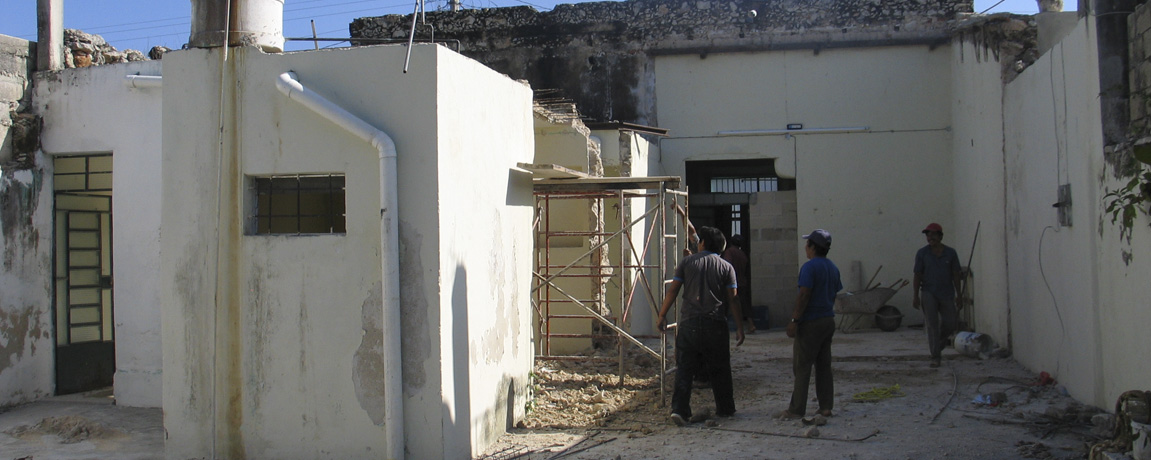


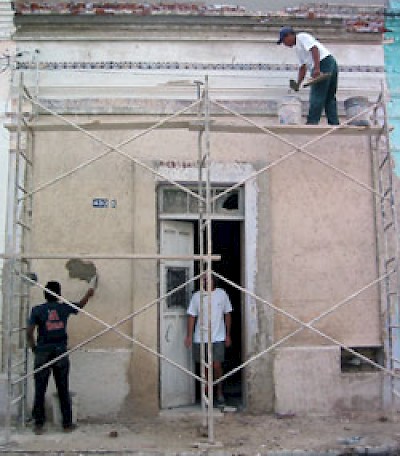
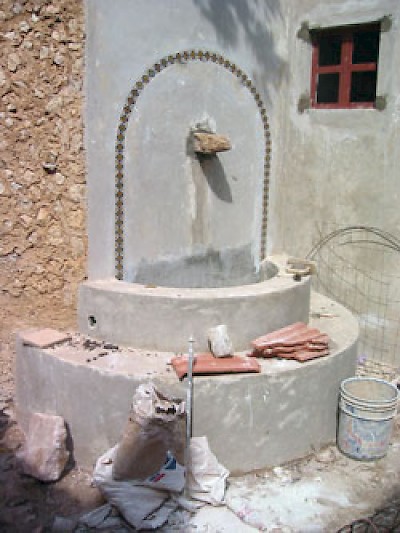
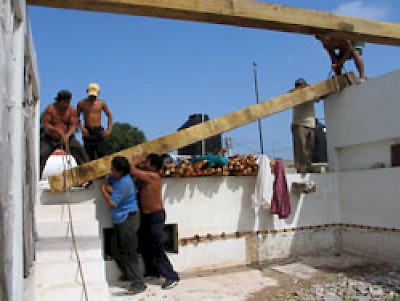
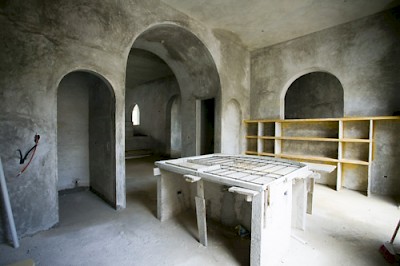
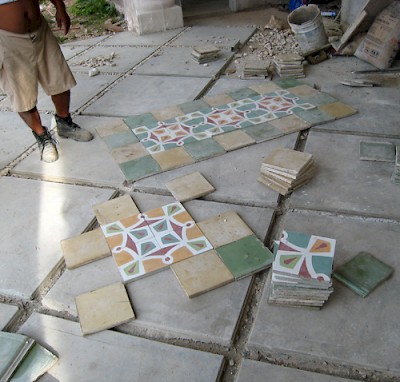
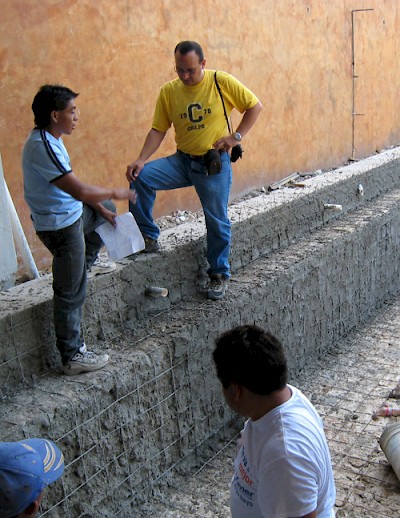
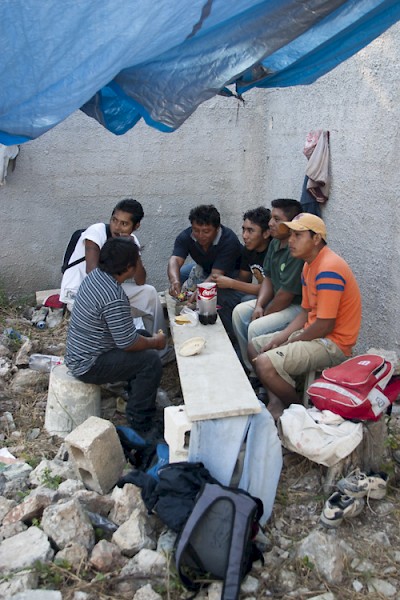

Comments
Tere 15 years ago
Could someone please tell me the approx. going rate per m2 of construction at this time Oct. 2010? Many thanks
Reply
CasiYucateco 15 years ago
Dear Julia,
Ambitious people! Yay! I can rest in the shade while barking out orders... Oh, wait. No.
Everything is available for purchase at local stores. Many times, there will be a local hardware shop just down the street, called a tlapaleria in Merida. Home Depot is actually in Merida too! Oh, wait again. It's not the full selection Home Depot you'd expect in the USA and, generally speaking, it is the most expensive place to buy building materials. However sometimes the prices are good there. And, if you don't feel like trying to explain it in Spanish, you can hunt around the store on your own for what you need. They might have it. And most likely, they won't.
Local firms supply everything you need: cement blocks, cement bags, piles of sand and gravel, shovels, wire, plumbing, 100% of what you need is available. Wood is more expensive since it is all imported.
If you have never built with cement before, I'm not really sure it is a do-it-yourselfer type thing. You must know how to brace the material while it dries. You must know how to engineer the addition of rebar so it will have sufficient tensile strength.
We just had about 700 sq ft built by someone else (no hot sun for us - continually delivering cash and cold water was the heaviest of our labor!) for about $14,000. That's around $20 US per square foot. Now: that is ONLY the ROUGH finished cost - the raw concrete construction. No extras like wiring, plumbing, floor tiles, light fixtures, ceiling fans, A/C units, or doors and windows. Oh, the openings are there, but nothing else. It includes walls and roof. "Floor" was already there.
From that point, you can "do-it-yourself" to finish it off nicely. Lay tile floors (many stores, lots of variety of types of tile materials in every color and pattern, some made locally). install wooden doors (or even make your own wooden doors), paint, waterproof the roof, make cabinets, whatever else you choose.
Am I going to claim that was a typical cost? No. That's cheaper than most because we speak Spanish and can communicate with all the builders' workers, are flexible on dates, don't mind where the piles of sand and gravel are dumped and don't have to worry about heavy traffic (interrupting delivery of supplies) in the front of the house.
But that is a starting cost.
Come visit on vacation. Everyone loves to talk about house construction. See what the climate is like and how things are built. Then you can decide whether you'd like to build from scratch, buy a fixer-upper, or just buy a completed, gringo-ready house. Come take a look!
Reply
Julia Kilmer 15 years ago
I am thinking about moving to the area and had some questions on building practices. It seems that most of the homes are concrete, and tile with additions of wood.
How expensive is this to do yourself, with the advice, or plan from a professional? Does the area have a building store to buy materials?
My boyfriend is a builder and are do it yourselfers!
Thanks for your help and advice.
Peace, Julia
Reply
Jaime and Mavi Ugaz 15 years ago
My wife and I live in Madison Wisconsin and a few years ago we decided to buy a property in Merida for our retirement. We purchased a property in Cholul that, in spite of needing some work, was surrounded by beautiful trees and had the country feel that we had hoped for. We were then lucky to read in yucatanliving.com about the experience that Ted Vanya and his wife had when they had their house built by a young couple of architects named Victor and Ingrid Carrillo. What impressed us most about the article was that Ted and his wife remained in Canada while their house was built, and placed their total confidence in the Carrillos. We knew that we needed someone we could trust too, since our jobs are in Madison and we could only come to Merida during our vacations. The Carrillos responded right away to our email and to all of our following questions in a timely manner, so it didn’t take long for us to make our decision. The project was started in March of 2009 and in the summer of 2010 we were already enjoying our beautiful house in Cholul. We are very happy with the quality of their work and their professionalism. During the whole process they would send pictures to us, which were actually one of our greatest joys in the last few months, and we would transfer money to them as the different phases of the project were completed. We were also very thankful to Victor for sending his workers back to our house during our last visit to polish up a few minor details even more. What’s more we have been able to foster a friendship with both Victor and Ingrid. We recommend their services wholly and without reservation.
Reply
CasiYucateco 15 years ago
Green algae can only grow with light. I agree completely with the Working Gringos. I suspect the top of your tinaco is missing or very loose. Or you have a cisterna (ground-level or underground tank that is pumped up to the tinacos) and the top to that is off.
Green algae means sunlight. Other than a missing tapa (lid), you may have very thin-walled white plastic piping that is allowing sunlight to enter pipes on the roof or side of a sunlit wall. Most likely, it's the lid.
Clean it all out with 50% chlorox 50% water, scrub down the inside of the tinaco and seal the top on so that not even the tiniest gnat or ray of light can get inside.
Reply
Working Gringos 15 years ago
Bill,
It sounds like dirt has gotten into your water tank (tinaco) somehow and you are now growing algae in your tinaco. Our advice would be to drain the tinaco completely and have someone clean it thoroughly. If your tinaco doesn't have a top on it, that would be strongly advised. With a secure top, no dirt should get in and there should be no reason for algae to grow.
Reply
Bill 15 years ago
Great articles! My wife & I have a house in the Merida area and our tap water has just turned green. Anyone know how to deal with this. Is it a water tank issue, a well issue, is it a seasonal issue? What causes it? We pay someone in the village to clean every couple of weeks, so the water gets used at that time. Any comments would be appreciated.
Reply
Yucatan Living - Building Our House VI 16 years ago
[...] How to Build a House in Merida [...]
Reply
Jo Ann Suco 16 years ago
Thank you for taking the time to help other gringos understand what is involved in building in the Yucatan.
Reply
Janet Boop 16 years ago
Has anyone stayed at or know someone who has rented one of Mauricio Abraham Pinto Escarilla's beach house rentals in the Progreso area? I found the houses on vacationrentals.com, but am having a difficult time finding any other info about these rentals or this family business. Any information would be appreciate.
Thank you,
Janet Boop
Reply
Working Gringos 16 years ago
We mean USD. Thanks for helping us clear that up.
Reply
« Back (30 to 41 comments)Next »